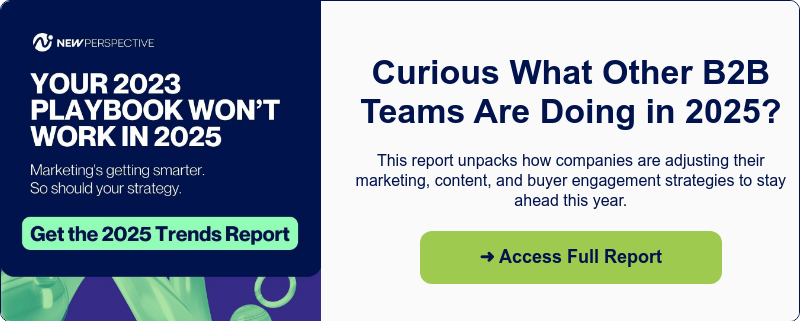Strategic Planning Assumptions: Marketing Examples

As I write this article, I’m making a number of assumptions about you. I assume you’re a marketer at a manufacturing company or similar industry. I assume you are in the middle of creating a strategic marketing plan.
If these assumptions are wrong, this article isn’t going to resonate with you – and it won’t perform very well. As marketers, we must make many assumptions to build our strategic marketing plan. These strategic planning assumptions allow us to plan ahead with certainty about the future.
What are Strategic Planning Assumptions?
Strategic assumptions include any assumptions that are used to build a strategic plan. These assumptions may consist of things that are difficult or impossible to predict. By nature, assumptions can never be 100% accurate, but they are necessary to allow a business to advance its strategic plans. While they can never be validated entirely, strong strategic plans are based on accepted and reliable strategic assumptions.
Examples of marketing assumptions
Examples of marketing assumptions may include: assuming no new legislation will affect your industry in the next six months, assuming a price will remain constant, or assuming your customers will want the new product you are releasing.
If any of these assumptions are wrong, your strategic plan will be built on a shaky foundation that could undo months of planning and work. That is why it is essential to come up with grounded and validated assumptions instead of rushing ahead. Your strategic plan should look at things realistically and critically.
Any strategic plan lives or dies based on the quality of the strategic assumptions where it is built. So, how do you identify and establish strategic planning assumptions?
Identifying assumptions in strategic planning
Your first step to establishing assumptions in strategic planning is to identify the existing assumptions your marketing team currently operates with. Set up a brainstorming session with your team at the start of a new project or as you determine your marketing budget for the year. It is best to start with broad categories and have your team develop assumptions that fit within them. Aim to identify specific assumptions that fit in categories such as:
Market assumptions
How will the market respond to your manufacturing marketing plan? Will your product be received well by customers and fit a specific need? Will competitors react in any particular ways? Make assumptions based on the overall market response.
Internal organization assumptions
Will any changes to the organization affect your strategic plan? Can you assume the same leadership will be in place throughout the project or throughout the planned marketing budget period? Can you assume the company will not be purchased?
Machinery and technical assumptions
Identify all your assumptions about the technical aspects involved in delivering and marketing your product or project. Will any technical issues affect your strategic plan?
Resource assumptions
Will the same team be available for the plan? Does your team have the knowledge and skills necessary? Will your planned marketing budget be cut at any point during the year?
Question and test your strategic planning assumptions
Once you have a complete list of all the strategic assumptions you rely on, review them critically to determine whether or not they are well-founded. For some assumptions, you can perform market research to determine the validity of the assumptions based on historical market performance, customer surveys, website analytics, and other metrics. Reviewing existing marketing KPIs to determine if any metrics contradict your assumptions can be another good test of your strategic assumptions.
Marketing plan assumptions that involve business aspects outside the marketing department can be followed up on. Talk with IT, Human Resources, and the C-level to determine the likely state of the organization and your available resources.
Allow changes in assumptions to change your goals and strategy
Your assumptions have been tested and validated, so you have a more reliable foundation to make strategic marketing decisions. Make sure you use it!
Simply identifying assumptions won’t do your business any good if you are not acting on the new information this identification and questioning unearths.
The goal of establishing assumptions in strategic planning should be to uncover inaccurate long-held assumptions or strengthen other strategic assumptions to allow you to rely on them even more for decision-making. Avoid the tendency for your team to revert to their previous way of thinking.
After defining your strategic planning assumptions, you can proceed with the remaining steps.
If you want more resources to help you with strategic planning, contact our team for a 15-min FREE consultation. When it comes to optimizing your marketing power and staying ahead of the pack, we can help.




